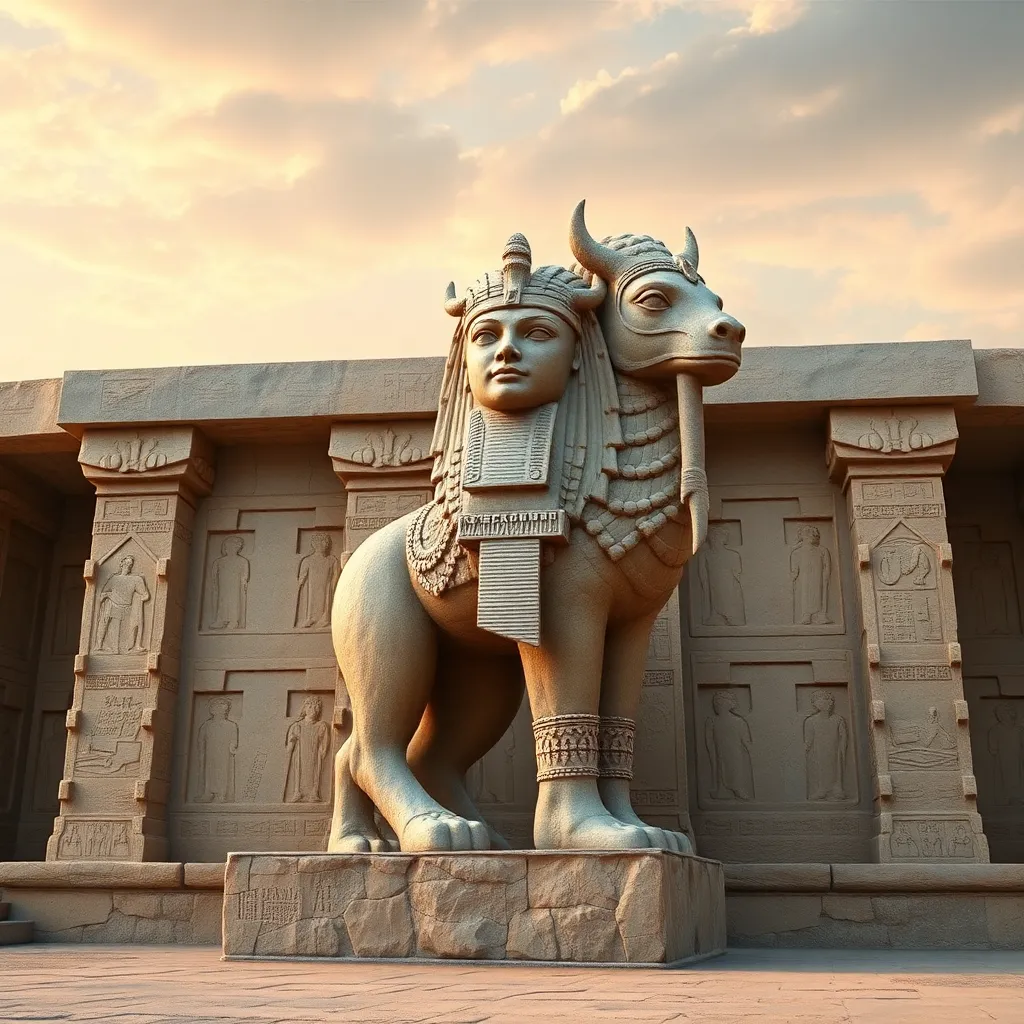The Flames of Vengeance: Ifrit and the Concept of Revenge
I. Introduction
Ifrit is a prominent figure in mythology and popular culture, often depicted as a powerful fire spirit or demon. Its origins trace back to Arabic folklore, where it embodies both the destructive and transformative powers of fire. The significance of revenge as a theme in storytelling resonates deeply across cultures, reflecting humanity’s complex relationship with justice and retribution. This article aims to explore the connection between Ifrit and the concept of vengeance, examining its mythological roots, modern representations, and psychological implications.
II. The Mythological Origins of Ifrit
The figure of Ifrit finds its roots in the ancient Arabian Nights tales and pre-Islamic mythology, often depicted as a being of immense power, capable of great destruction. Historically, Ifrits were viewed as both protectors and tormentors, representing the duality of fire—its ability to create warmth and light, as well as its potential for devastation.
A. Historical context of Ifrit in Arabic folklore
Ifrits are described in various texts, such as the Qur’an, where they are portrayed as jinn, supernatural beings who can be both benevolent and malevolent. In these tales, Ifrits often serve as guardians of treasures or as formidable adversaries to heroes.
B. Characteristics and symbolism of Ifrit
- Elemental association with fire
- Symbol of chaos and destruction
- Often depicted with a fearsome appearance, including glowing eyes and smoky forms
- Embodies the concept of passion and vengeance
C. Role of Ifrit in traditional stories and legends
In many traditional stories, Ifrit serves as an antagonist who must be confronted and defeated, often serving as a catalyst for the hero’s journey. Their presence signifies a challenge that leads to personal growth, reflecting the notion that confronting one’s fears can lead to triumph.
III. Ifrit in Modern Media
In contemporary culture, Ifrit has evolved and found its way into various forms of media, from video games and literature to films and anime. These portrayals often reflect or diverge from traditional depictions, showcasing the versatility of the Ifrit character.
A. Representation of Ifrit in games, literature, and film
- Video Games: Ifrit appears in numerous video games, notably in the Final Fantasy series, where it is often summoned as a powerful ally.
- Literature: Modern interpretations of Ifrit can be found in fantasy novels, where it is portrayed as a complex character with a rich backstory.
- Film and Anime: Ifrit has been featured in animated films and series, often highlighting its destructive capabilities and moral dilemmas.
B. How modern portrayals reflect or diverge from traditional depictions
While traditional Ifrits were often one-dimensional embodiments of chaos, modern interpretations tend to explore their complexity, portraying them as tragic figures driven by desire for revenge or justice. This evolution reflects a broader trend in storytelling that seeks to humanize mythological figures.
C. Examples of notable works featuring Ifrit
Some notable works that feature Ifrit include:
- Final Fantasy series: Ifrit is a recurring summon, representing fire and destruction.
- The Arabian Nights: Classic tales where Ifrit serves as both a villain and a guide.
- Anime Series: Various series feature Ifrit-like beings, often focusing on themes of vengeance and redemption.
IV. The Psychology of Revenge
Revenge is a powerful motivator, deeply rooted in human psychology. Understanding the motivations behind revenge can shed light on why it is such a prevalent theme in storytelling.
A. Understanding the motivations behind revenge
People often seek revenge due to feelings of betrayal, injustice, or loss. The desire to restore balance or retaliate against perceived wrongs can drive individuals to act against their better judgment.
B. The emotional and moral implications of seeking vengeance
While revenge may provide temporary satisfaction, it often leads to further emotional turmoil and moral dilemmas. The pursuit of vengeance can cloud judgment and lead to actions that create a cycle of violence.
C. How revenge can lead to a cycle of violence
Revenge tends to perpetuate conflict, with each act of vengeance leading to further retaliation. This cycle can escalate, resulting in prolonged suffering and destruction.
V. Ifrit as a Symbol of Revenge
Ifrit serves as a potent symbol of vengeance in mythology and modern storytelling, embodying the destructive nature of revenge while also raising questions about justice.
A. Analyzing Ifrit’s role as an embodiment of vengeance
Ifrit represents the darker aspects of revenge, portraying how the quest for retribution can consume an individual. Its fiery nature underscores the passion and intensity that often accompany the pursuit of vengeance.
B. The interplay between destruction and justice in Ifrit’s narrative
Stories involving Ifrit often blur the lines between justice and vengeance, challenging characters—and audiences—to consider the moral implications of their actions. Ifrit’s destructive power can be seen as a force of both punishment and retribution.
C. Case studies of Ifrit’s vengeance in various stories
In many narratives, Ifrit’s vengeance serves as a pivotal plot point. For instance, in the tale of the Fisherman and the Ifrit, the spirit represents the consequences of human greed and betrayal.
VI. Cultural Interpretations of Revenge
Revenge is viewed differently across cultures, influencing how stories like that of Ifrit resonate within various societies.
A. How different cultures view revenge and its consequences
- In some cultures, revenge is seen as a form of justice.
- In others, it is viewed as a moral failing that leads to further conflict.
B. The influence of Ifrit on cultural narratives surrounding vengeance
Ifrit has influenced various cultural narratives, serving as a cautionary tale about the consequences of revenge and the importance of forgiveness.
C. Comparisons with other mythological figures associated with revenge
Similar to figures like Nemesis in Greek mythology or Kali in Hindu tradition, Ifrit embodies the complexities of revenge, reflecting the universal struggle between justice and vengeance.
VII. Lessons from Ifrit’s Vengeance
The stories of Ifrit offer valuable moral lessons about the nature of revenge and the potential for redemption.
A. Moral lessons derived from Ifrit’s stories
- Revenge often leads to further suffering.
- Forgiveness can break the cycle of violence.
B. The potential for redemption and healing beyond revenge
While Ifrit embodies vengeance, many stories highlight the possibility for characters to seek redemption, suggesting that healing is possible beyond the desire for retribution.
C. Modern applications of these lessons in everyday life
In contemporary society, the lessons derived from Ifrit’s stories encourage individuals to reflect on their motivations and consider the consequences of their actions, promoting forgiveness and understanding as alternatives to revenge.
VIII. Conclusion
In summary, the exploration of Ifrit and the concept of vengeance reveals the complexity of human emotions and the moral dilemmas associated with revenge. Ifrit serves as a powerful symbol of the destructive potential of vengeance and the transformative power of forgiveness. As we continue to engage with these stories, we gain insights into our understanding of justice and morality, highlighting the enduring relevance of Ifrit in both mythology and modern storytelling.



